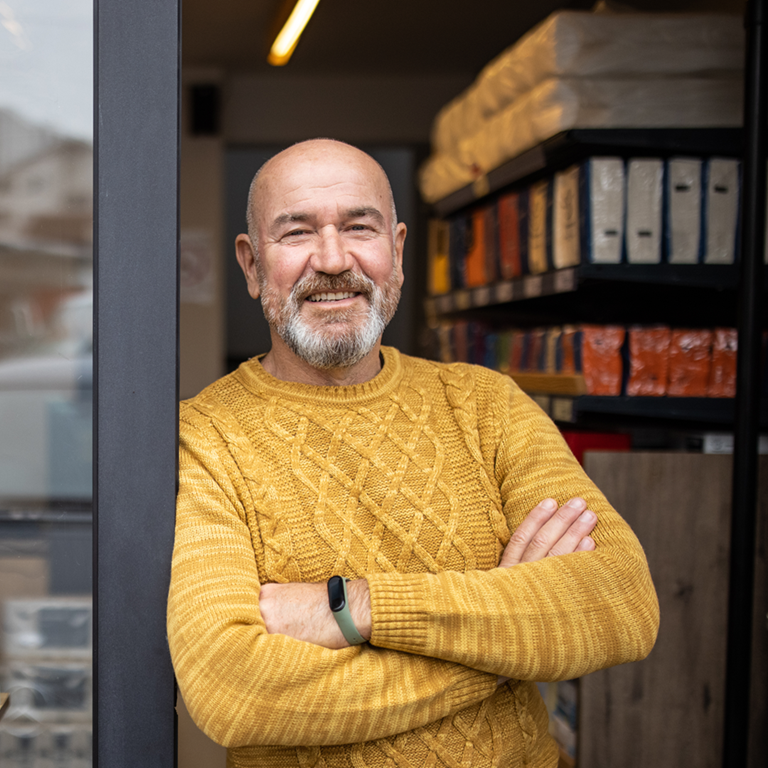It depends on your level of qualification, experience and client base but as a general guide aesthetic practitioner salaries average at £35,000.
As you know, there's a lot more to becoming a successful aesthetic practitioner than meets the eye.
Not only do you need to understand the industry inside out, you’ll need to keep on top of the latest trends and treatments, as well as what qualifications and experience is required.
Once your clinic is up and running, it’s also vital to operate professionally and protect yourself from the unforeseen. Even for the most experienced practitioners, accidents do happen and you need to take precautions in case something does go wrong – least not to protect yourself against any risks related to administering these kinds of highly skilled treatments.
So, that’s the focus here today – what’s involved in becoming an aesthetic practitioner and the risks you need to be aware of to be successful.
How to Become an Aesthetic Practitioner
Whether you have a long established career in beauty and want to branch out, or you’re a college leaver considering your options for the future, the aesthetics industry is very appealing.
Helping clients gain self-confidence is rewarding and the financial gain from owning your own aesthetics business can be attractive too.
Aesthetic practitioners (or beauty therapists) focus entirely on skincare. This includes: preserving healthy skin, rejuvenating skin traumas, or administering non-surgical solutions to areas clients are unhappy with. Typically, you’d work in a salon, clinic or spa, or alternatively with a dermatologist.
Invasive procedures such as Botox, facial fillers and chemical peels are performed by licensed medical professionals, not by beauticians.
Whilst aestheticians can’t diagnose conditions or write the appropriate prescription, they can provide skincare assistance according to a doctor's orders or dermatologist’s instructions.
Before taking any action, it’s vital you’re clear on the area of beauty you want to focus on.
If it is aesthetics, it’s a good idea to decide which type of location you see yourself based in and which treatments you will specialise in. Then you will need to look at what level of qualification is required.
What are the Different Types of Beauty and Aesthetic Treatments?
Aestheticians provide a whole host of specialist treatments, each varying based on the area of the body. Whilst a lot of treatments are focused on the face there are other areas of the body to consider too. It's an aesthetician's job to know what’s right for their clients based on their concerns. It is also vital to know what’s involved with the treatments, including aftercare details, before recommending anything to clients.
Before you finalise your treatment list and decide whether you fall under the traditional beautician category, or the more advanced aesthetics practitioner, it is worth considering the finer details of each treatment to be sure they are a match for you and your business. Here are the most popular treatments offered by beauty therapists:
Facials
A relaxing treatment aimed to recharge the skin and remove impurities. Although the treatment will vary by provider, facials tend to involve detoxifying and cleansing by exfoliating, steaming, extraction and are often concluded with a mask. A facial carried out by an aesthetics provider (as opposed to a beautician) may use lasers, peels, microdermabrasion and micro needling.
Extractions
Extractions are not always part of a standard facial – as with most treatments, it depends on where you have it done. The process aims to unclog pores by either a mechanical or manual process. Depending on your client’s pain threshold, this treatment can hurt. You should also be clear that they shouldn’t expect all of their black heads / white heads to be removed after the first treatment.
Acne treatments
A beautician will focus on a skin care routine that aims to prevent breakouts and acne. There are a number of recommended products to use on a regular basis, in conjunction with regularly visiting the salon for an exfoliating facial.
Depending on the severity of the acne, clients may need expert advice from a dermatologist and an aesthetician is likely to have specialist treatments that work to reduce scaring that is a result of acne.
Microdermabrasion treatments
Considered a minimally invasive treatment to target fine lines, wrinkles, minor scars and sun damage. Microdermabrasion essentially ‘sands’ and exfoliates the top layer of skin to rejuvenate it. The beautician will use a diamond-tipped wand or microcrystals to gently pass over the skin.
Superficial chemical peels
Chemical peels involve the use of acid to exfoliate the skin. The acid used in a superficial peel will only remove the damaged skin cells from the top layer of skin as it doesn’t penetrate the deeper layers. The process can often cause peeling which may last up to a week.
Body wraps, masks and scrubs
A treatment often found in a spa, body wraps have varying focuses – whether it is detoxifying, hydrating or blood circulation. The products applied to the full body will enhance overall skin health and detoxifying wraps are also said to tighten skin and aid weight loss.
Hair removal
There are a number of hair removal techniques available. Beauticians typically offer waxing, tweezing and threading. Others may offer more advanced treatments such as laser hair removal.
Airbrush tanning
While not all beauticians offer tanning, it is even more unlikely you would find it listed on an aesthetics practitioner’s website.
When carrying out a spray tan, a beautician sprays the skin with a thin mist of tanning product. The tan can last up to two weeks, depending on how long the top layer of skin takes to shed.
Spray tans provide a safe way to achieve tanned skin, without risking the dangers of sun exposure or UV lamp tanning beds.
Makeup application
Make-up artists, often referred to as MUAs, offer a professional make-up application service. Once saved for special occasions such as a wedding or a prom, MUAs are now finding themselves booked up weekly for regular nights out. Typically, the MUA supplies the makeup, so there's no need for a client to bring their own.
Advanced beauty treatments
Level 7 aesthetic practice was traditionally an accolade held for medics. However, over recent years this has also opened up to non-medic practitioners. Training includes the practical element for cosmetic procedures as well as the further morphology and anatomy. This will give the same advanced Level 7 aesthetic practitioner qualification that medics receive and the certification is recognised internationally.
This qualification is needed to be able to offer the following injectable treatments:
Botox
Botulinum toxin injections (Botox) is most commonly known as an anti-wrinkle treatment but it can also be used to control excessive sweating. It works by relaxing the muscles to smooth out lines and wrinkles. It is not permanent and usually lasts around three to four months. It is vital to ensure the product you are using is fully licensed.
Dermal Filler
Used for lip shaping and contouring the face, dermal filler can transform your face shape. It can be used to achieve a more chiselled jawline, higher your cheekbone or plump your lips. The filler is injected to the face by a trained practitioner and the results tend to last between 6 and 18 months.
Tear trough filler
This treatment involves injecting the under eye area with hyaluronic acid gel which will boost collagen production and replace lost volume. The final results may take a couple of weeks to show. This is because the skin can take some time to relax and allow the filler to integrate with the surrounding tissue.
Non-surgical nose reshaping
Also known as non-surgical rhinoplasty, the treatment involves using dermal fillers as a less invasive and cheaper option to the traditional nose job. This is a temporary treatment and would need to be maintained via top ups. The procedure involves injecting dermal fillers to the nose to achieve a better definition, straightened and lifted nose.
Fat dissolving injections
Here, a non-surgical solution is injected into localised pockets of fat that can’t be lost through normal exercise and health eating.
For this reason, it’s typically aimed at people who have a balanced diet and exercise regularly. The solution is fat dissolving which on entering an area breaks down and destroys the stubborn fat cells. It’s used all over the body, particularly the stomach, arms, knees, underarms and armpits.
Microblading and semi-permanent make-up
While both are forms of a cosmetic tattoo, practitioners use different methods of application for microblading and semi-permanent make-up. Treatments can be used on clients who suffer with alopecia, scars, baldness and cancer and are used to help people feel better about their appearance.
There are many other advanced treatments that level 7 aesthetic practitioners may choose to specialise in. In this ever changing landscape, it’s important to keep on top of industry insights.
Once you’ve worked out what kind of beauty therapist or aesthetician you want to be you can work out what level of qualification you’re going to need.
Aesthetics Qualifications
Government-approved aesthetics courses are awarded by one of CIBTAC, VTCT or City & Guilds and for anyone aged 16 or over. While the format can vary a little from one aesthetic practitioner course to another, they all cover the same subject matter.
Some beauticians offer in house training and apprentice schemes, so it’s always worth speaking to local business owners if you’re looking for opportunities to ‘train on the job’.
Level 2
This is the minimum qualification that is needed to work as a beauty therapist in a salon or to become self-employed.
It’s the entry point in any salon and allows the junior therapist to get real-world experience. Usually it would focus on the more popular and straight-forward treatments like manicures, pedicures and waxing.
To progress further within the beauty industry and offer more advanced or specialist treatments, most therapists go on to study Level 3.
Level 3
Often considered the ‘full’ beauty qualification, level 3 builds upon the knowledge and skills learnt at level 2. It’s for those beauty therapists who wish to go beyond general beauty treatments and specialise in intimate waxing, makeup application and Swedish massage.
There is also the option to progress even further to Level 4, although this is only for the most advanced beauty ministrations.
Level 4
Advanced beauty treatments such as micropigmentation, IPL and laser require a level 4 qualification. This is because the treatments in question require specific understanding and more in-depth technical knowledge.
Level 4 qualification is usually for those who have ambitions of being a niche or specialist beauty therapist.
Level 7
This qualification is at a similar level to a Master’s degree and aims to standardise the training required for the most advanced aesthetic practitioners. It’s required in order to administer Botox and dermal fillers.
A level 7 qualification can be obtained in two ways:
a) Complete a three year postgraduate degree in aesthetic medicine, or
b) Take an independent level 7 training course (over a shorter timescale).
Most training providers at his level offer pathways to medical practitioners who are complete beginners in beauty, or those with prior aesthetics experience.
V300 Non-Medical Prescribing
As the name suggests, this enables nurses and other health professionals to independently prescribe medication without sign off from a doctor or dentist.
The V300 qualification is not essential for an aesthetician to carry out a prescription dependent treatment such as Botox. This is because Botox is a prescription-only medication so not having a V300 means a Doctor is needed for you to operate.
However, having it simplifies things for you as there is no need for a Doctor’s involvement. You can just focus on making your customers happy.
What risks might an aesthetics practitioner face?
Even the most skilled practitioner can experience a momentary blip in concentration or slip of the hand. There’s also the risk of a client having a reaction to a treatment or catching an infection.
Working in this industry may put you at risk of a malpractice or negligence claim. It’s therefore essential that you have the correct insurance to cover compensation claims and any associated legal costs defending your claim.
There are also other types of insurance to consider such as employers liability, public liability and business interruption. Speak to a specialist insurance broker who will explain the types of cover that are right for you and your business.
For more information visit our aesthetics insurance page.
Key takeaway
Becoming a successful aesthetic practitioner involves:
- Obtaining the right qualifications for your aspirations.
- Building your experience (and client base if going solo).
- Sustaining your success by protecting yourself from the unforeseen.
If you're not certain what insurance you need, we'd love to help. Simply, call one of our experts on 0330 134 4564 and we’ll provide free advice, guidance and a no obligation quote for the cover you need.
Real-world insight that we don't share anywhere else
Get access to exclusive help, advice and support, delivered straight to your inbox.
You Could Save Over 35%*
Contact our team to receive a no obligation, instant quote today.
* Please click here to view our pricing disclaimer.
Frequently asked questions
While most aesthetic practitioners tend not to be medical professionals, they do sometimes work with medical experts to treat skin conditions. Ultimately, their aim is to improve the quality and appearance of the skin - primarily providing skincare treatments and products that promote rejuvenation and anti-aging.
Practitioners often concentrate on improving the appearance of the face, as it is the first place where signs of aging become visible. This includes reducing wrinkles, enhancing skin quality, and giving clients the tools to maintain youthful-looking skin.
Historically, the difference in treatments a medical versus non-medical aesthetician was able to offer was significant. Nowadays, not so much.
Medical aesthetician
These aestheticians are already doctors or nurses who have medical qualifications and academic training. They have broader and deeper knowledge of skin, as well as the body, muscles and nerves.
As a result, medical aestheticians can deal with more complex skin issues, trauma and plastic surgery.
Non–medical aesthetician
Practitioners studying a Level 4 aesthetics course learn about anatomy and physiology to ensure they have thorough knowledge of the human body. However, this not to the same depth or level as the medical aesthetician.
You Could Save Over 35%*


